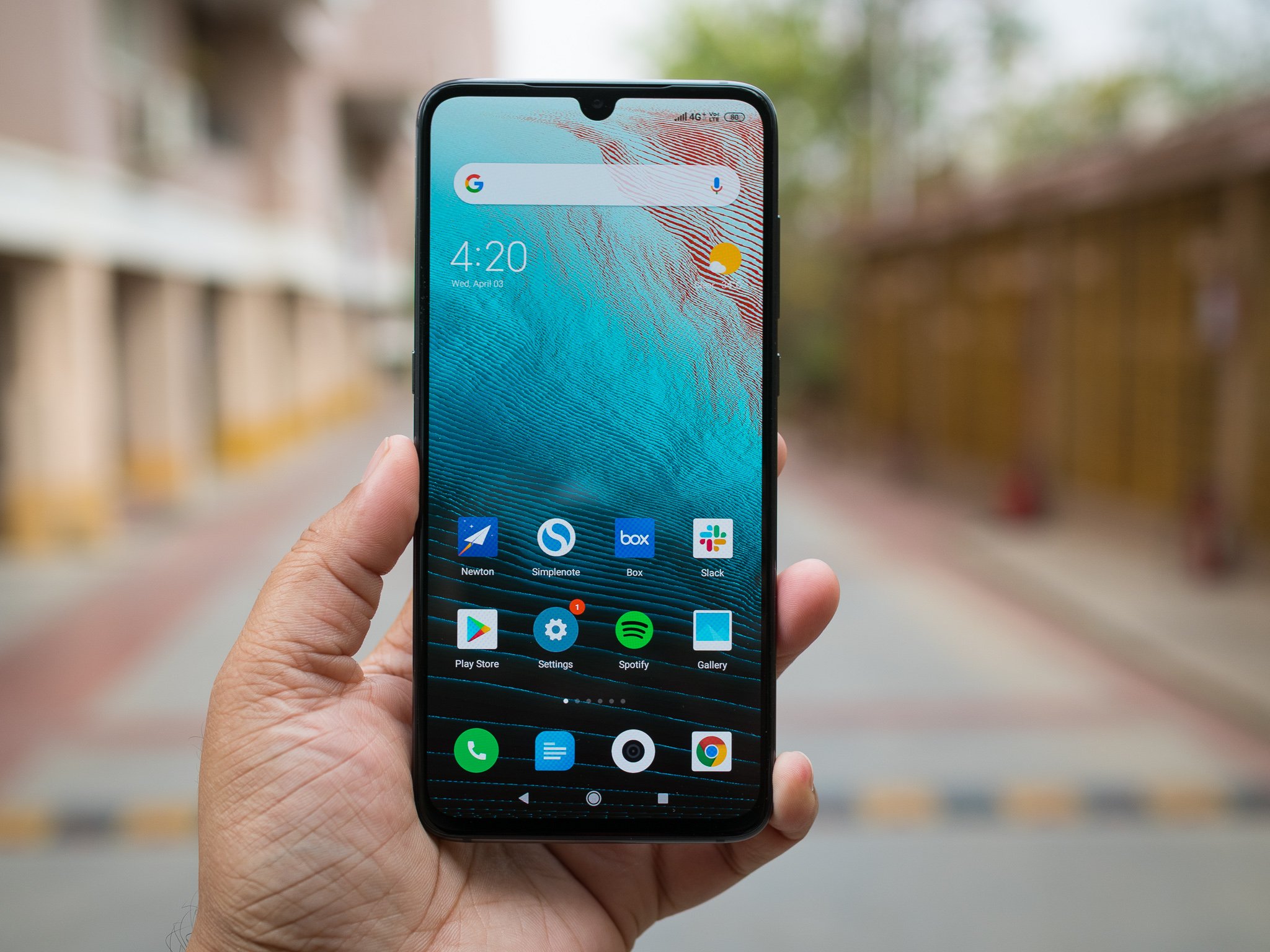At this point, you don't need me to tell you that Xiaomi makes products that offer great value for money. The Chinese manufacturer showed time and again over the last five years that it can absolutely dominate in this regard, and even though we've seen other brands try to emulate Xiaomi's strategy, none have been as successful.
With the Mi 9, Xiaomi is offering several key upgrades that make it a great affordable flagship while still maintaining a low price. We've seen devices in this category inch past the $550 mark, and the Mi 9 is set to be available shortly in Western markets for €449 ($500), effectively undercutting OnePlus and Honor.
The Mi 9 has a lot of new features to offer. It is the first Xiaomi phone with three rear cameras, and there's 20W wireless charging. It is also the first Xiaomi device to run on Qualcomm's latest Snapdragon 855 chipset. The fact that you get the same hardware as the Galaxy S10+ at half the cost makes the Mi 9 an exciting proposition for those looking to save some cash while getting the latest specs.
The Good
- Excellent value
- Gorgeous design
- 20W wireless charging
- Great 48MP camera
The Bad
- No 3.5mm jack
- MIUI bogged down with ads
- No IP rating
Xiaomi Mi 9 Hardware
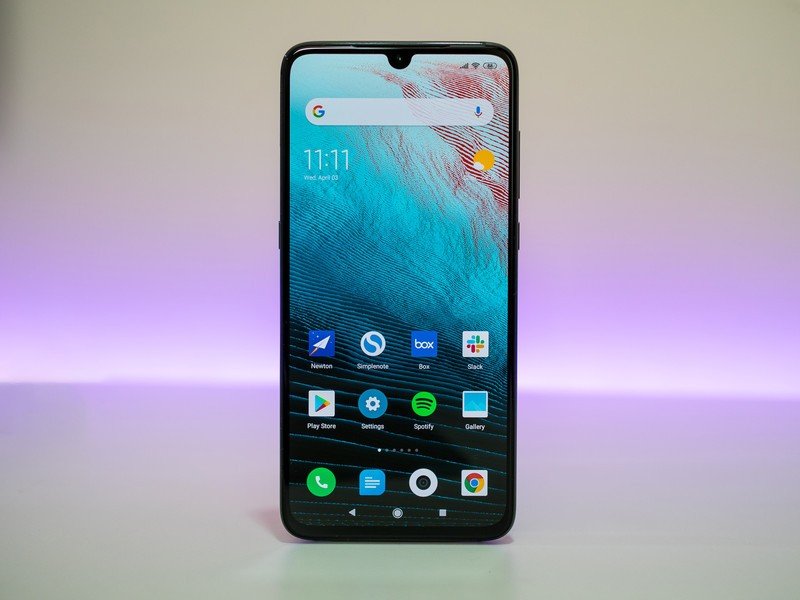
Xiaomi switched to a metal-and-glass design for the Mi series back in 2016, and the Mi 9 is an evolution of that design language. There are smooth flowing curves and rounded corners, and the phone feels great to hold in-hand. The back curves to meet the mid-frame, and while the design itself isn't all that new, Xiaomi is betting on new color options to differentiate the Mi 9.
Xiaomi is offering interesting gradient patterns with the Mi 9. The Ocean Blue and Lavender Violet color options have a gradient effect that switches between various hues based on light reflecting off the glass, but if you're not into that, there's the standard Piano Black model. Like the Mi 8 Pro last year, Xiaomi is selling a variant of the Mi 9 with a transparent back that shows off a PCB. It doesn't show the actual layout of the components, but is instead a plate that's inserted underneath the see-through glass. Nevertheless, it is still a very cool effect.
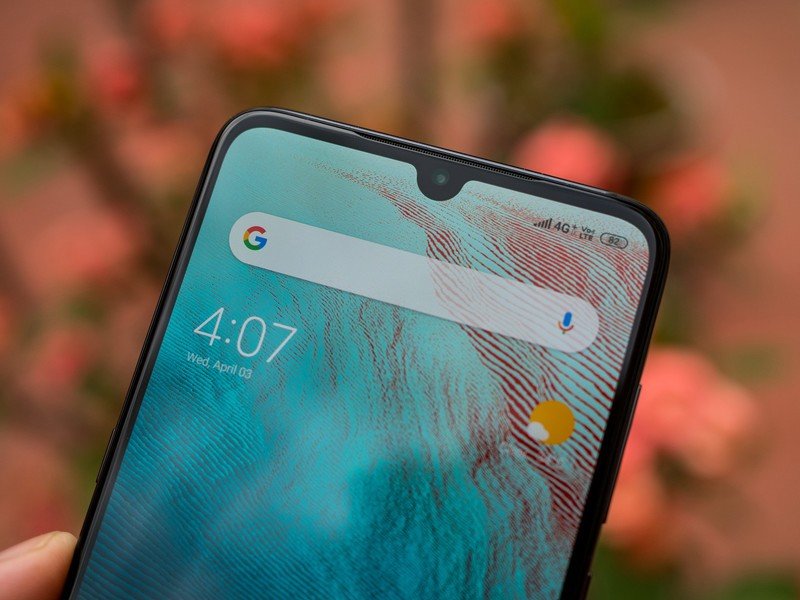
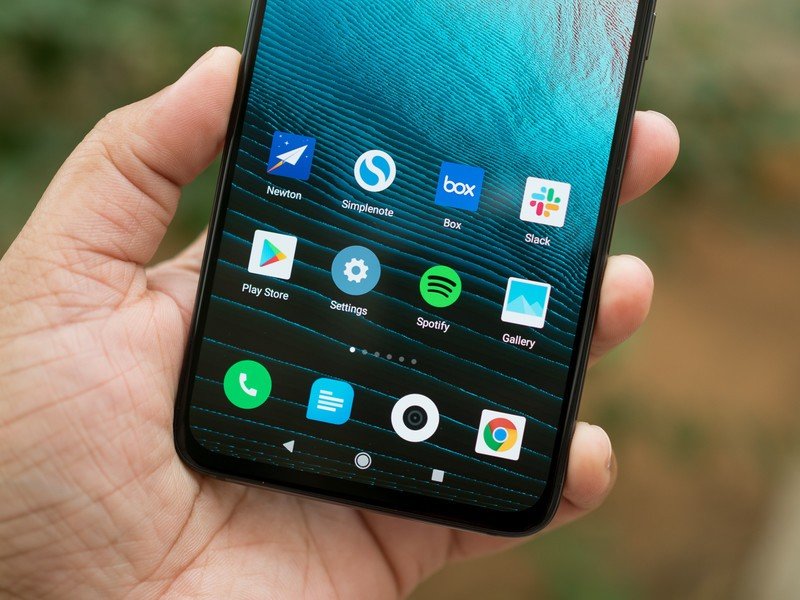
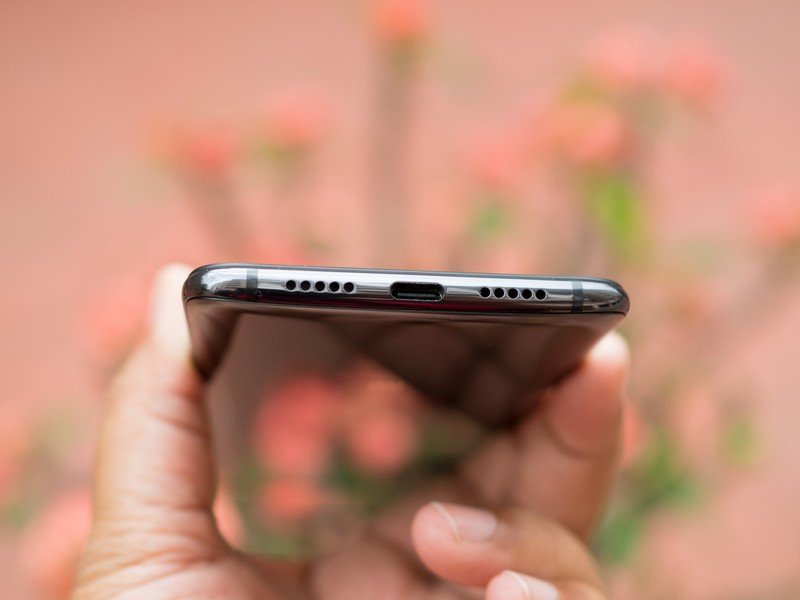
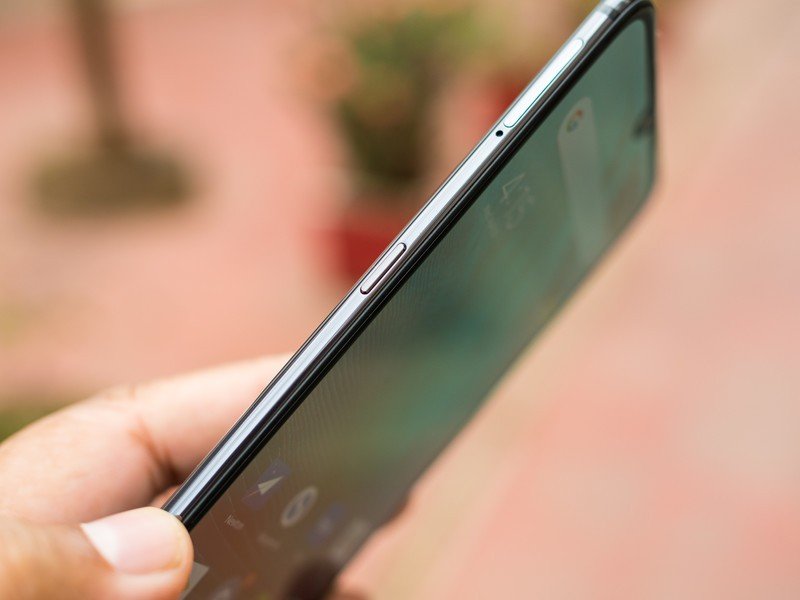
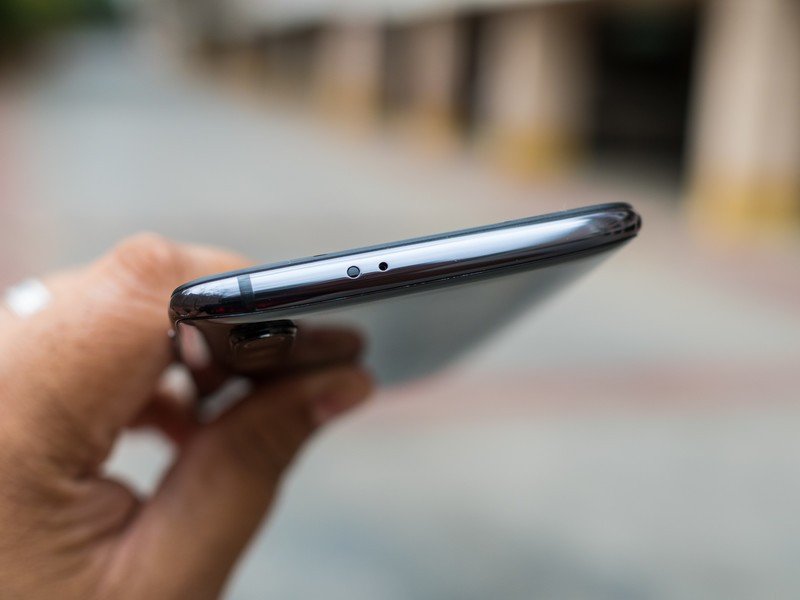
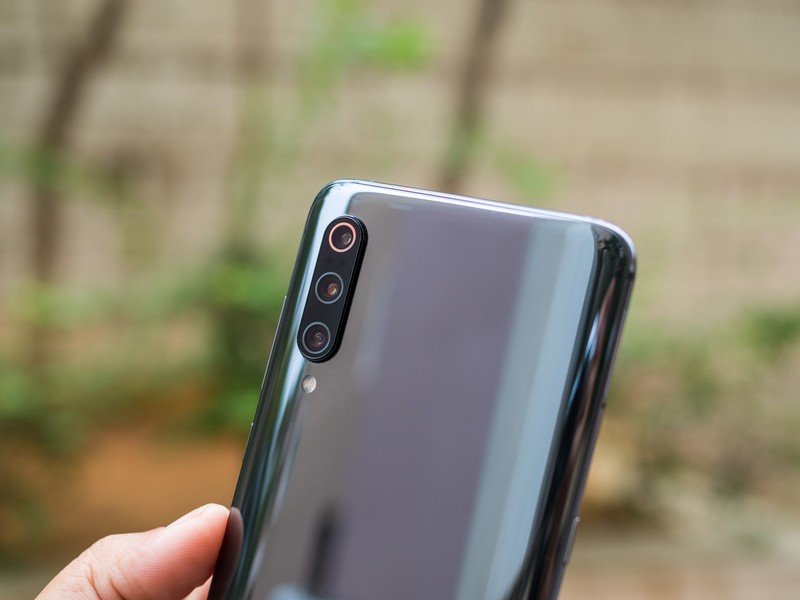
Regardless of the color option you pick up, you'll get a camera sensor with a multi-colored accent ring around it. The camera array itself is interesting as the Mi 9 is the first Xiaomi phone to feature three sensors at the back. The downside of this is that the camera protrudes significantly from the chassis, leading to a wobble whenever you use the phone on a flat surface.
The Mi 9 is also the first of many devices to launch this year with a dedicated Google Assistant button, located on the left side. The power and volume buttons are to the left, and all the buttons have decent tactile feedback. There's a single speaker at the bottom (with the second grille purely for aesthetics) and an IR blaster at the top.
Overall, the Mi 9 feels every bit as premium as recent Samsung phones, and the build quality is right up there with $1,000 flagships. The gradient patterns give the device an added flourish, and the curves at the back make it easier to hold and use. The one downside of the glass back is that it picks up smudges quite easily, so if you want your phone looking pristine, you're better off using it with the clear case that's bundled in the box.
The Mi 9 feels every bit as premium as $1,000 flagships while costing half as much.
A key design change up front is the tiny dewdrop notch and the minimal bezels at the bottom. As a result, the Mi 9 is only marginally taller than the Mi 8 while offering a larger 6.39-inch display. The Super AMOLED screen is protected by Gorilla Glass 6, and the thin bezels give the device a 90% screen-to-body ratio. The panel itself is one of the best you'll find in this category, with excellent contrast and color accuracy. The FHD+ resolution is more than adequate, and while the panel isn't quite as vibrant or high-res as recent Galaxy devices, it is a fantastic offering in the $500 space.
The screen gets bright enough to use outdoors under harsh sunlight, and you have the ability to tailor the color temperature. You can choose from default, warm, or cool, or select an Increased contrast mode that boosts the contrast of the panel. There's also a blue light filter — dubbed Reading mode — that bumps up the warmth to reduce eye strain at night. You get the option to double tap to wake the screen, and there's also a raise-to-wake toggle.
With Xiaomi making the switch to AMOLED panels, you get an ambient display mode that shows time and notification icons on the lock screen when the display is off. You'll be able to select from various clock faces, and set a schedule for AOD so it is disabled at night.
This is one of the best displays you'll find in the affordable flagship space.
Xiaomi decided to get rid of the headphone jack from its Mi line two years ago, stating at the time that it did so to increase battery capacity. That particular device had a 3350mAh battery, and last year's Mi 8 came with a 3400mAh unit. You get a smaller 3300mAh battery on the Mi 9 even though the phone has the same 7.6mm thickness as the Mi 8.
The speaker situation hasn't changed from last year. You still get a single speaker at the bottom of the phone, and while it is passable for listening to podcasts or streaming the occasional YouTube video, it doesn't come close to the stereo speakers on the Pixel 3 or the Galaxy S10.
What's also annoying is the fact that the Mi 9 doesn't come with an IP rating, particularly when you consider that there's no headphone jack on the device. I still don't understand why most affordable flagships don't have the feature, but if you care about water resistance, you'll have to shell out the big bucks and get a "true" flagship.
Another feature that's missing from the Mi 9 is face unlock. The Mi 8 relied on an IR sensor next to the front camera to offer secure face unlock, but with the Mi 9 featuring a waterdrop cutout, there's not enough room to accommodate two sensors. It's possible we'll see a software-based face unlock make its way to the device, but for now, you'll have to rely on the fingerprint sensor as the primary means of authentication.
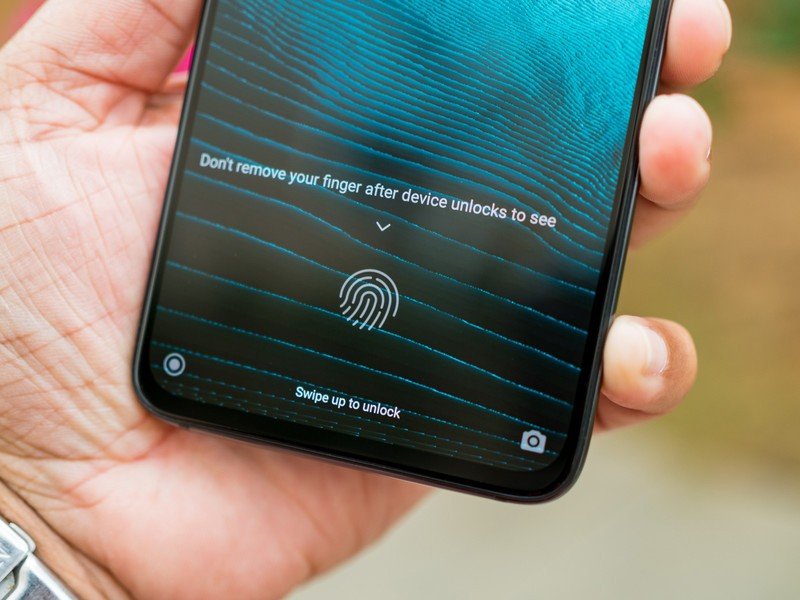
On the subject of biometrics, the Mi 9 has an optical in-display fingerprint sensor as standard. Xiaomi says it is faster than the one on last year's Mi 8 Pro, and while that claim was true, the sensor wasn't very reliable in day-to-day usage. It failed to recognize my fingerprints far too often, and while it wasn't the slowest optical in-display sensor I used, reliability is an area where it loses out.
The Mi 9 is the first phone I've used that's powered by the Snapdragon 855 (Samsung sells the Exynos versions of the Galaxy S10 here), and the performance on offer is just as fluid as that of last year's Snapdragon 845. We don't often see huge year-on-year differences in the Snapdragon 8xx series, but Qualcomm has somehow eked out a huge 40% performance uptick for the CPU and a 20% uptick for the GPU.
Qualcomm switched to a 1+3+4 design with the Snapdragon 855, with a single 2.84GHz Kryo 485 Gold core backed by three 2.42GHz Kryo 485 Gold. The Kryo 485 Gold platform is based on ARM's new Cortex A76 design, and the chipset also has four energy-efficient 1.8GHz Kryo 485 Silver cores that are based on the Cortex A55.
The Mi 9 is the fastest Android phone available today, beating out the Pixel 3 and Galaxy S10.
The switch to the 7nm node has also made things more energy-efficient, and the result is that the Snapdragon 855 is the fastest chipset available on Android by some margin. It easily beats HiSilicon's Kirin 980 in most synthetic benchmarks, and the fact that you're getting this chipset in a device that costs $500 is staggering.
I never noticed any slowdown or lag in the month I used the Mi 9, and the phone was easily one of the fastest I've ever used. MIUI 10 has its share of issues, but the sheer performance on offer made things buttery smooth. Gaming, in particular, was a delight on the Mi 9 thanks to the Adreno 640, and I didn't see any jitter while playing PUBG for hours on end. The phone has a Game Turbo feature out of the box, with the overlay giving you easy access to recording options while you're in the middle of a game.
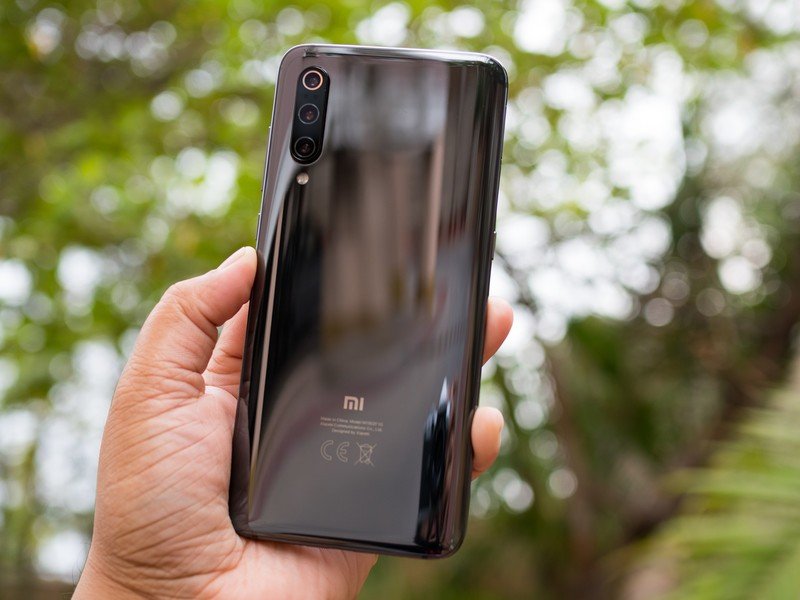
The Mi 9 comes with 6GB of RAM and 64GB of storage as standard, and you'll also be able to pick up a model with 128GB or 256GB of storage and 8GB of RAM. There's a version that offers 12GB of RAM, but that's exclusive to the Chinese market. Like previous Mi flagships, the Mi 9 misses out on a MicroSD slot, but you do get a dual SIM card tray.
20W wireless charging is a game-changer for Xiaomi.
The Mi 9 has a smaller battery than its predecessor, but I easily got a day's worth of usage out of it consistently. Screen-on-time averaged just over 4.5 hours over the course of 16 hours, and that's in line with what I usually get on other devices with a similar battery. Things get interesting, however, when we talk about how the Mi 9 charges.
Xiaomi got on the wireless charging bandwagon last year, and it is already starting to pull ahead in this category. The Mi 9 is the first phone to offer 20W wireless charging, facilitated by a charging mat Xiaomi launched alongside the phone. The charging mat provides a 40% charge from flat in 30 minutes, with a full charge taking just under 90 minutes. After years of using 5W and 10W wireless chargers, it's great to use a charging mat that provides similar speeds as wired quick chargers.
Interestingly, the wall plug provided for the charging mat also doubles as a 27W wired charger on its own, with the feature dubbed Charge Turbo. In wired mode you'll get a 70% charge in just over 30 minutes, and it will charge from flat to 100% in just 70 minutes. The phone didn't get uncommonly hot while charging wirelessly — if anything, the wired 27W charging mode made it heat up much more.
The charging mat will go on sale in the U.S. — even though the phone won't make its way to the country — and the best part is that it costs $20.
Xiaomi Mi 9 Camera
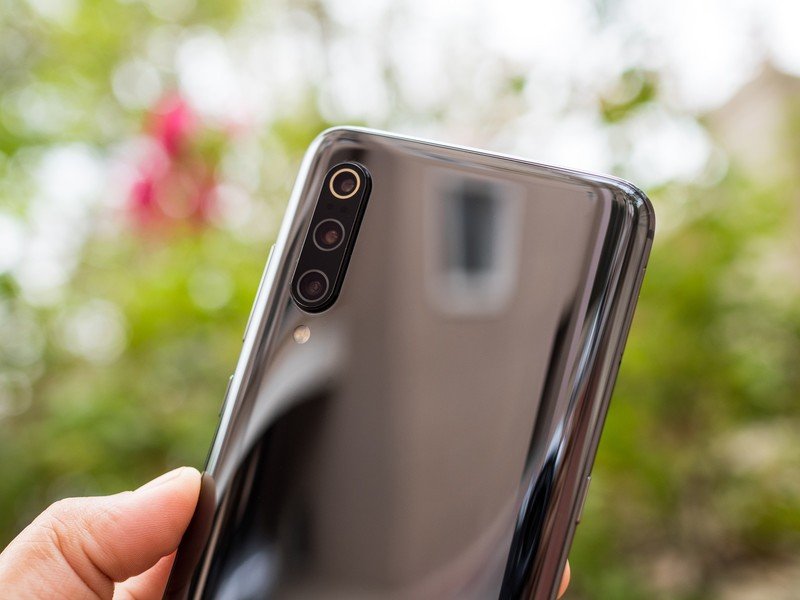
The marquee feature on the Mi 9 is the camera array at the back — it is the first phone from Xiaomi to feature three rear cameras. The primary 48MP f/1.75 camera is joined by a 16MP ultra-wide lens and a 12MP telephoto sensor that offers 2x optical zoom.
The Mi 9 relies on pixel binning to deliver 12MP photos from the primary camera, allowing the sensor to pack in more detail and reduce noise. Up front, you get a 20MP module. Xiaomi debuted 4-axis stabilization on the Mi 5 three years ago, and while it was a mainstay on several flagships since, it is missing on the Mi 9. The Mi 9 doesn't have optical image stabilization on any of its three camera modules, and that affects the final image quality.
The Mi 9 lacks OIS, but the 48MP camera does a great job in most scenarios.
Xiaomi has heavily invested in computational photography in recent years, and the Mi 9 has an AI toggle in the viewfinder. The AI automatically enhances colors based on the scene, and there is a noticeable difference in the final output.
The camera interface itself hasn't changed much in MIUI 10: you'll have to swipe left and right to switch between shooting modes, and there are toggles for HDR, flash, AI, filters, beauty effects, and wide-angle mode. Unlike other phones that have a wide-angle sensor, you can't go from 1x/2x zoom to the wide-angle lens from the same toggle. There's a dedicated button for the mode that's to the left of the zoom toggle, and that makes things just that little bit harder to switch to the wide-angle lens.
You can also switch to a 48MP mode, and there's a dedicated night mode for low-light shooting conditions. There's also a pro mode that lets you manually adjust white balance and exposure settings.
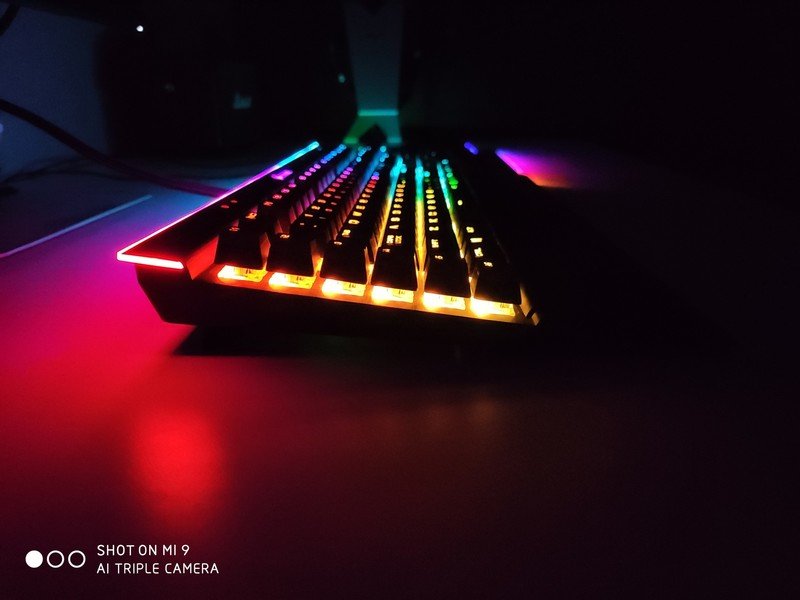
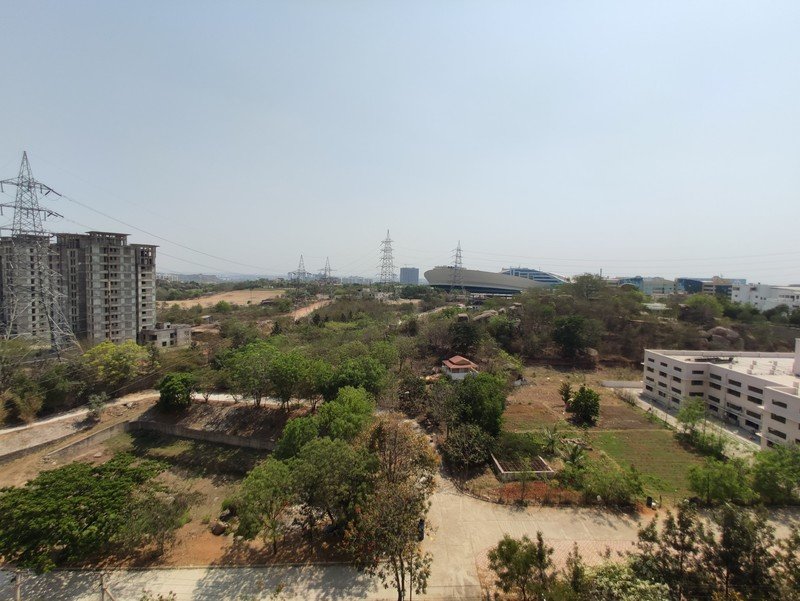



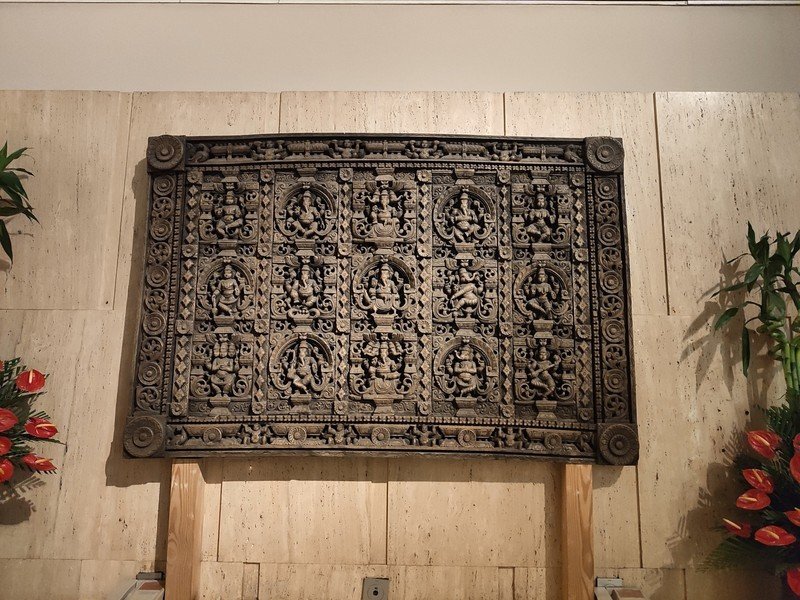
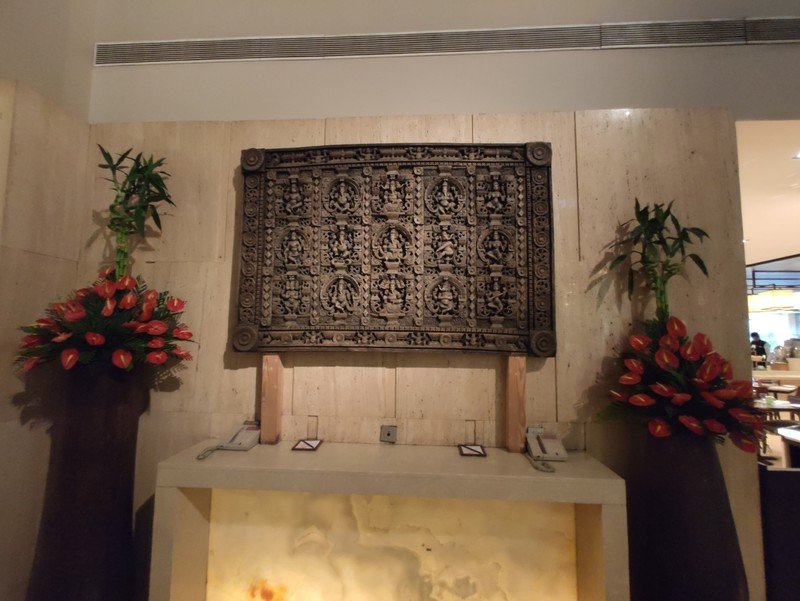




The Mi 9 takes incredible photos in daylight conditions, with accurate colors and lots of detail. Dynamic range is great, and photos never look oversaturated even with the AI mode enabled. You get some noise when switching to the 2x zoom lens, but there's still plenty of detail. The wide-angle shooter is a great new addition, and while the overall quality may not be quite as good as the primary lens, it produces decent shots.
I got a few fantastic photos with the primary camera in low-light scenarios, but the zoom and wide-angle lenses suffer with the lack of OIS. The dedicated night mode does a great job bringing out detail in extremely limited lighting situations, and while it isn't as good as Night Sight on the Pixels, it is pretty good for a device in this category.
If I had to describe the Mi 9's camera in one word, it would be capable. It isn't quite on the same level as the Galaxy S10 or the P30 Pro, but it also costs half as much as those devices.
Xiaomi Mi 9 Software
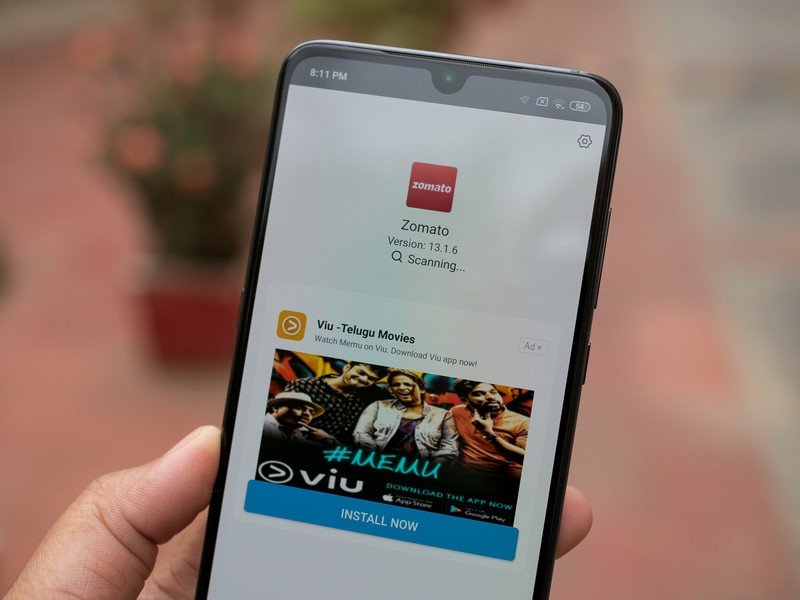
MIUI was Xiaomi's first product in the sense that the ROM was the first consumer-facing offering. Although it made its debut all the way back in 2010, it wasn't until 2013 that MIUI started gaining momentum globally. MIUI 5 had a ton of features that made it stand out from other Android ROMs at the time, including lock screen media controls, built-in spam filtering, app permissions, and much more.
MIUI has picked up even more features and several design changes over the last five years, and the result is that MIUI 10 is the most polished and modern interface Xiaomi has produced to date. Customizability is still the core tenet of MIUI 10, and you'll find a seemingly endless bevy of options to tailor the phone to your preferences.
The sheer amount of features was what drew me to MIUI all those years ago, and Xiaomi has done a remarkable job making sure the interface doesn't feel bloated. MIUI 10 on the Mi 9 is based on Android 9.0 Pie, but you wouldn't know that by looking at the interface. The ROM is still heavily skinned, and while MIUI now has over 300 million users around the globe, it is still predominantly catered to the Chinese audience.
You're never short of customization options in MIUI 10.
As such, there's still no app drawer, and platform updates don't come around often. To Xiaomi's credit, there have been a few meaningful tweaks over the years that are aimed at a global audience, including the notification pane. The notification pane on MIUI 10 is similar in functionality to what you'd find on pure Android, with a brightness slider, in-line notification replies, and quick toggles. It's a refreshing change from previous MIUI iterations, and there are other welcome additions elsewhere as well.
There's a system-wide dark mode that switches the colors of the notification pane and first-party apps, gesture-driven navigation that's akin to what you'd find on iOS, one-handed mode, ability to run two instances of the same app, an incredible theming engine, and so much more.
With the Mi 9, there's also a dedicated hardware button for Google Assistant, which is one of the easiest ways to invoke the digital assistant. Users in China will be able to call upon Xiaomi's own Xiao AI assistant, but in global markets, it defaults to Assistant. Because this is Xiaomi, you get customizable options for the button, letting you choose double-press and press-and-hold actions. The actions vary from launching the front or rear camera, toggling the flashlight, enabling the blue light filter, opening the previous app, or pulling up Google search.
MIUI gets a lot right, but you're constantly bombarded with ads.
Where MIUI gets annoying is ads. Xiaomi turned to ads as a revenue driver last year, and as a result, the entire interface is inundated with ads. Innocuous actions like installing an app will trigger a security scan that checks the data for any issues, and in the process deliver an ad. It got so bad while setting up the phone that I had to put it aside while apps were installing in the background.
You do have the option to disable the security scan feature, but the fact that it's there in the first place is irritating. Xiaomi could have easily gotten rid of the feature in the global ROM as Google already offers a similar feature in Play Protect. The feature makes sense in China — where there isn't a centralized app store and Xiaomi effectively acts as a gatekeeper — but there's no need for it in the global build.
I understand that Xiaomi needs to make money somehow, but there has to be a better way than bombarding users with ads. There should be an option where users will be able to pay to disable ads, like Amazon used to do with its Amazon Exclusive program a few years ago. I'd be the first to sign up for that.
Xiaomi Mi 9 Bottom line
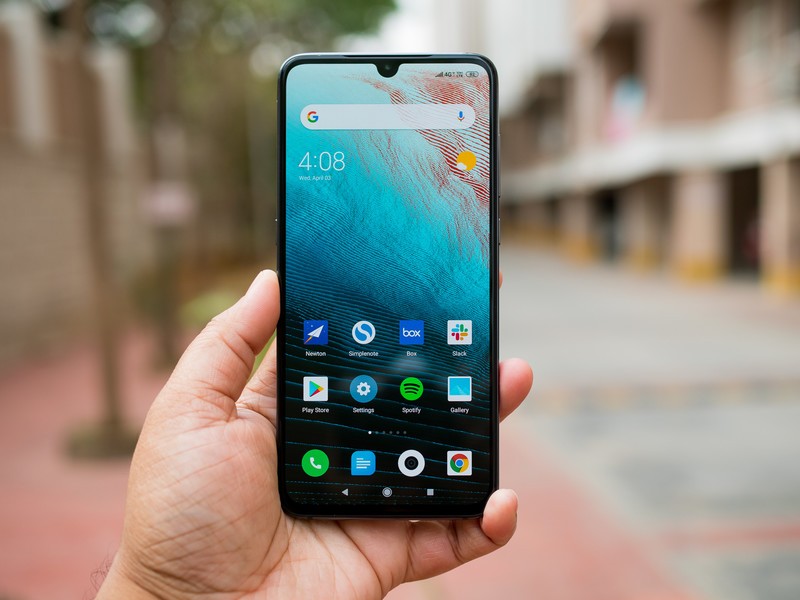
The Mi 9 once again shows that Xiaomi knows how to deliver on value. It is one of the most affordable devices powered by the Snapdragon 855, and that alone should be enough incentive to pick up the device. You also get a gorgeous AMOLED panel, a 48MP camera that gets the job done in most scenarios, and a battery that easily lasts a day.
If you live in a country where the Mi 9 will officially go on sale, buy it without a second thought.
The design of previous Mi flagships was understated, but that isn't the case with the Mi 9. With several bold and flashy color option on offer, it's sure to grab eyeballs. The transparent edition, in particular, is amazing and makes the phone stand out. Overall, the Mi 9 is a great contender in the affordable flagship space, and it'll be interesting to see what other companies come up with in this category this year.
It's a shame that Xiaomi won't bring the Mi 9 to India, but the phone will go on sale in the UK and other European markets. It will be available for just €449 ($500), making it an absolute bargain. There won't be any $500 devices that offer this level of performance, and although the OnePlus 7 is on the horizon, it'll end up costing closer to $600.
To sum up, the Mi 9 is the fastest $500 phone in the market today, and that's unlikely to change anytime soon.
4.5 out of 5
The Snapdragon 855 makes the Mi 9 one of the fastest phones money can buy today, and it's incredible that you can pick it up for just $500. Sure, MIUI 10 has its set of drawbacks, but the annoyances are overshadowed by the value on offer here. The display is fantastic, you'll get all-day battery life, a great camera, and a design that won't look out of place on a $1,000 phone.
If you're eyeing the Mi 9 and live in a market where the phone will go on sale, I'd recommend getting the transparent edition. It may not show the actual layout of the internal components, but it looks wicked cool and is unlike any other phone today. The lavender and blue variants are also evocative in their own way, with the gradient patterns differentiating the design.

Harish Jonnalagadda is Android Central's Senior Editor overseeing mobile coverage. In his current role, he leads the site's coverage of Chinese phone brands, networking products, and AV gear. He has been testing phones for over a decade, and has extensive experience in mobile hardware and the global semiconductor industry. Contact him on Twitter at @chunkynerd.
